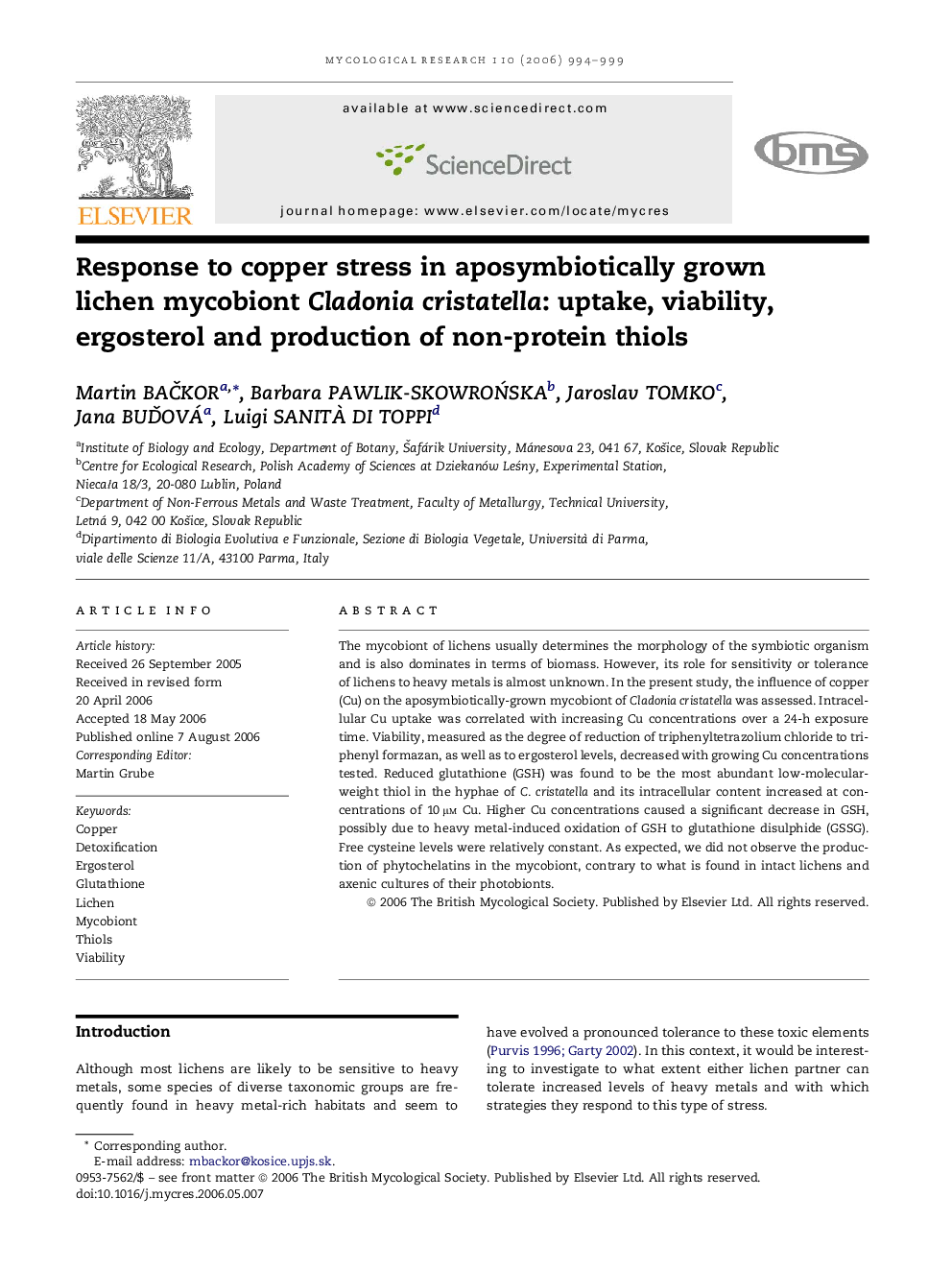| Article ID | Journal | Published Year | Pages | File Type |
|---|---|---|---|---|
| 4358136 | Mycological Research | 2006 | 6 Pages |
The mycobiont of lichens usually determines the morphology of the symbiotic organism and is also dominates in terms of biomass. However, its role for sensitivity or tolerance of lichens to heavy metals is almost unknown. In the present study, the influence of copper (Cu) on the aposymbiotically-grown mycobiont of Cladonia cristatella was assessed. Intracellular Cu uptake was correlated with increasing Cu concentrations over a 24-h exposure time. Viability, measured as the degree of reduction of triphenyltetrazolium chloride to triphenyl formazan, as well as to ergosterol levels, decreased with growing Cu concentrations tested. Reduced glutathione (GSH) was found to be the most abundant low-molecular-weight thiol in the hyphae of C. cristatella and its intracellular content increased at concentrations of 10 μm Cu. Higher Cu concentrations caused a significant decrease in GSH, possibly due to heavy metal-induced oxidation of GSH to glutathione disulphide (GSSG). Free cysteine levels were relatively constant. As expected, we did not observe the production of phytochelatins in the mycobiont, contrary to what is found in intact lichens and axenic cultures of their photobionts.
